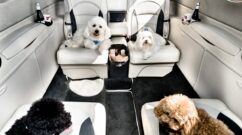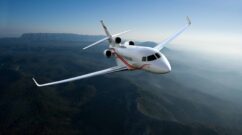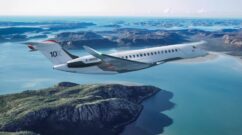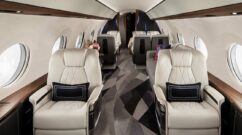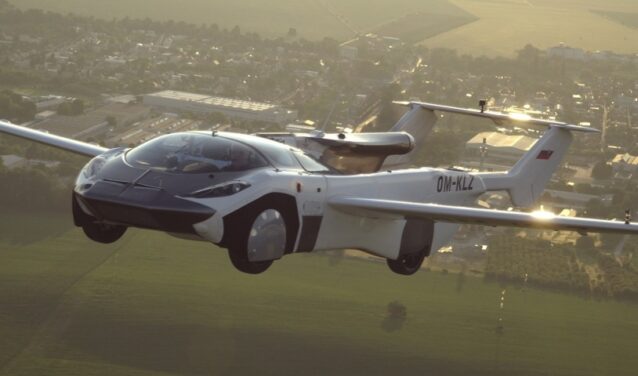Klein Vision, the manufacturer of the AirCar flying car, has made an announcement. On January 24, 2022, via a press release, the Slovak company announced that its flying car had been certified. The country’s civil aviation authority has officially issued the AirCar concept with its certificate of airworthiness. The story of this Slovak flying car began in 2016, when Stefan Klein opened his company Klein Vision. The following year saw the birth of the AirCar project, a prototype flying car that today has just received its certification. From helicopter drones to flying cabs, AEROAFFAIRES presents what could be the future of air transport.
AirCar certification opens the door to mass production of highly efficient flying cars. It’s official and definitive confirmation of our ability to change medium-distance travel forever.
So says Professor Stefan Klein, head of the AirCar flying car project.
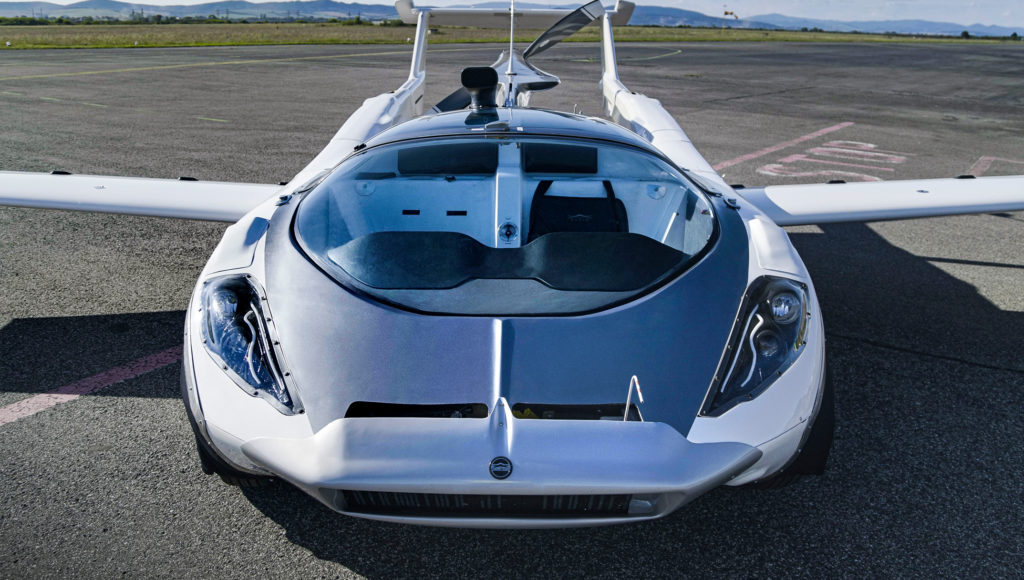
The history of Klein Vision’s AirCar
The concept and idea of creating a flying car is not new. Long seen in science fiction films, the flying car has now become a reality. It is also becoming a new development in air transport.
The AirCar project was launched in 2017 by Klein Vision, a Slovak company. A team of 8 aeronautics professionals developed this flying car project. Over the next few years, the project evolved from initial sketches, through various prototypes, to wind tunnel testing of the engines and the aircraft… And with all this, it took no less than 100,000 hours of work to build the AirCar. The AirCar is one of the world’s most technically advanced vehicles, and one of the first to travel both on land and in the air.
After several years of study and research, it was time to present AirCar to the general public. AirCar was presented in November 2019 in Shanghai, China, at the China International Import Expo (CIIE).
Today, its 5th version has been certified. To achieve this, the AirCar underwent a series of tests. It flew for a total of 70 hours, and performed some 200 take-off and landing maneuvers. The aircraft fully complies with EASA (European Aviation Safety Agency) standards. The Slovak Civil Aviation Authority has therefore issued Klein Vision’s flying car with its certificate of airworthiness.
What are the features of the AirCar flying car?
We’ve all heard of a car. But what about a car that flies? The engineers and inventors of this car had to find ingenious ways to bring their project to fruition. The idea behind the AirCar is that it can move in the air as well as on the ground. In fact, the AirCar has an aerodynamic fuselage and a modern, attractive design both inside and out. Composite material is the main material used to increase lift during flight. Flight tests have also demonstrated the aircraft’s stability in the air. Similarly, for take-off and landing maneuvers, Klein Vision ensured that the aircraft maneuvers without the pilot needing to operate the controls.
The AirCar is powered by a BMW 1.6L 160 hp engine. It is gasoline-powered. Several prototypes have been machined by Klein Vision. These include a two-seater, a 3-seater and a 4-seater, as well as an amphibious version.
The two-seater version weighs almost 1000 kilos. It can travel distances of around 1000 km at speeds of over 300 km/h.
The automated transition from a road vehicle to an air vehicle and vice versa, the deployment/retraction of wings and tail, is not just the result of pioneering enthusiasm, innovation and courage; it is the fruit of excellent engineering and professional knowledge.
Says Branko Sarh, Senior Technical Scientist at Boeing Co.
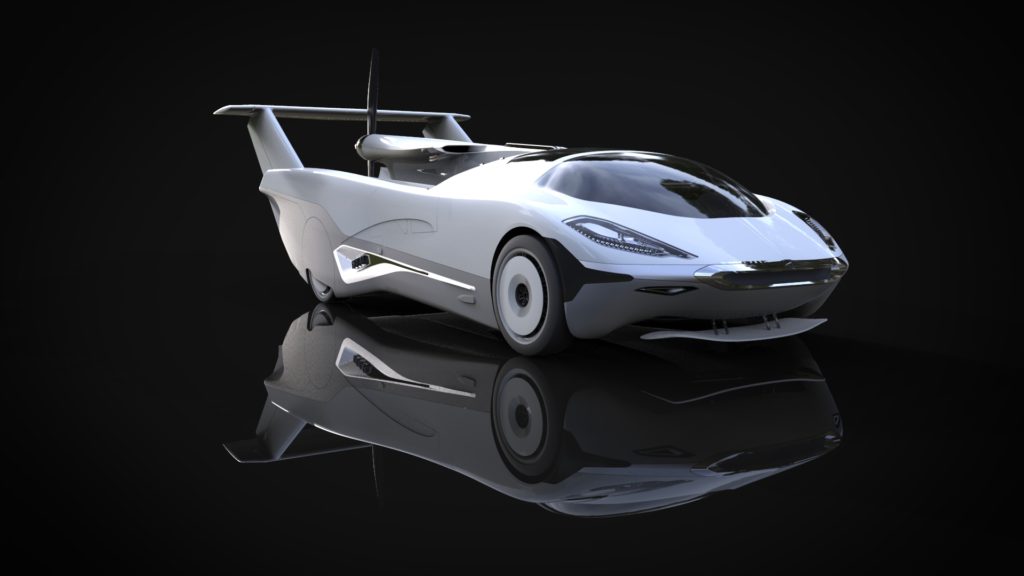
This flying car, a combination of innovation and technology, made its debut on June 28, 2021. The AirCar made its first flight between two cities, taking 35 minutes from Nitra to Bratislava. The flight went perfectly well, and on landing, in just 3 minutes, the AirCar’s wings folded away to make way for a perfectly normal car. The latter then took to the road in the city center of the Slovak capital.
To date, new AirCar models are in production, and one is due to be certified this year.
As AirCar co-founder Anton Zojac puts it, their flying car is a device linking several elements:“where the road meets the sky“.
While we await the arrival of the flying car on our roads and in the air, our aviation experts are at your service 24/7 for your private flight at +33 (0) 1 44 09 91 82. Don’t hesitate to visit our online quote to get a price estimate for your customized flight.
Frequently asked questions about AirCar, the certified flying car
How does the transition between car and airplane mode work?
The transition between the two modes is fully automated, requiring no complex manual intervention. At the touch of a button, the wings and tail deploy or retract in a matter of minutes.
On-board sensors and control systems ensure that each step is carried out safely, without the pilot needing to correct the maneuver. This technology is based on advanced engineering, rigorously tested to ensure maximum reliability.
What are the minimum weather conditions for flying the AirCar?
Like all aircraft, the AirCar is subject to weather constraints. It can fly in clear weather, with minimal visibility and moderate winds.
Exact conditions will depend on the final specifications of the certified model, but current prototypes have been designed to withstand standard conditions similar to those of small light aircraft. Flights in heavy rain, dense fog or strong winds are not recommended for safety reasons.
Do I need a special license to drive/pilot the AirCar?
Yes, the AirCar requires both a road driving license and a private pilot’s license (PPL) or higher, depending on local regulations. In Slovakia, where the aircraft is certified, the aviation authorities have approved its use under certain conditions.
Other countries may impose additional requirements, such as specific training in hybrid vehicles. Klein Vision is considering partnerships to simplify this process in the future.
What is the AirCar’s real range in flight and road mode?
The certified two-seater version offers a flight range of around 1,000 km at a cruising speed of 300 km/h, thanks to its optimized BMW engine.
In road mode, the range is similar to that of a conventional car with the same engine, i.e. around 500 to 600 km with a full tank. Future versions, especially those with electric or hybrid drive, could improve on these figures.
Is the AirCar compatible with conventional airport infrastructures?
Yes, the AirCar can take off and land on standard runways at small aerodromes, which means it can be used without the need for dedicated infrastructure.
However, its use in urban areas will depend on the evolution of regulations and the eventual creation of “vertiports” (platforms for aerial vehicles). For the time being, they share the same spaces as light aircraft.
What are the safety precautions in the event of engine failure during flight?
The AirCar incorporates a ballistic parachute, a tried-and-tested safety system in light aviation, capable of braking the aircraft’s fall in the event of an emergency.
What’s more, its aerodynamic design enables it to glide a significant distance to land safely, even without propulsion. Tests include failure scenarios to validate these protocols.
How much does the AirCar cost and when will it be marketed?
The price has not yet been officially announced, but experts estimate that it could be in the region of $800,000, placing it in the entry-level private jet segment.
Klein Vision plans limited production initially, with potential deliveries as early as 2026 for the first customers. More affordable models could follow.
Does the AirCar emit more CO₂ than a traditional plane or car?
With its current petrol engine, its carbon footprint is comparable to that of a small, single-engine aircraft. However, Klein Vision is working on hybrid and electric versions to reduce its environmental impact.
Carbon offsetting, already offered by some operators (such as AEROAFFAIRES), could be integrated into commercial offers.
Can the AirCar be parked in a normal parking lot?
In car mode, once the wings are folded, the AirCar’s dimensions are similar to those of a conventional road vehicle (around 5 meters long). It can therefore be parked in standard parking lots, provided there is sufficient headroom (around 2 meters). A private garage is recommended to protect sensitive aeronautical components.
Are there any load restrictions (baggage, passenger weight)?
Like all aircraft, the AirCar has a payload limit that includes passengers, fuel and baggage. For the two-seater, the maximum capacity is estimated at around 200 kg plus the pilot. Exact details will be given in the user manual, but you’ll need to travel light to optimize range.
What’s the level of comfort on board during the flight?
The interior is designed to rival that of a high-end car, with ergonomic seats, partial soundproofing and intuitive controls.
However, as in a light aircraft, turbulence can be felt more than in a private jet. The cabin is not pressurized, limiting low-altitude flights.
Could the AirCar be used in the city as a flying cab?
Not for the time being. While the idea is appealing, urban aviation regulations, noise and the need for runways make such use a complex proposition.
Klein Vision is initially targeting intercity routes (e.g. linking two cities 300 km apart), but developments could open up this market later.
What about maintenance?
The AirCar will require regular technical inspections, both on the road (like a car) and in the air (like a plane).
Klein Vision plans to set up a network of approved centers, but the logistics have yet to be worked out. Maintenance will probably be more expensive than for a conventional vehicle, given its dual function.
Are there any plans for autonomous (unmanned) versions?
To date, the AirCar requires a qualified pilot, but the company does not rule out the possibility of developing partial or even total automation systems in the future, if legislation evolves.
This will also depend on technological advances in drones and autonomous cabs.
Where can I see or try out the AirCar?
Klein Vision organizes public demonstrations from time to time, notably in Slovakia. Airshows (such as the Paris Air Show) or events dedicated to innovative mobility are also potential opportunities. Contact the company directly to find out about its schedule.
Will the AirCar be available for rental like a private jet?
This will depend on demand and partnerships. Some companies, like AEROAFFAIRES, could offer rentals if the model appeals to business customers.
However, the need for dual qualifications (road + air) could limit this option in the early stages.
